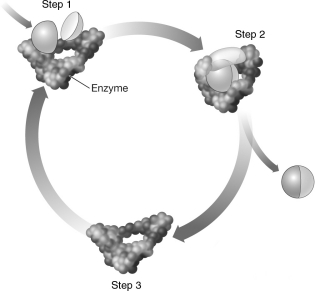Multiple Choice
The image below diagrams the action of an enzyme. Notice that the enzyme is depicted as being more tightly wrapped around the substrates in step 2 than it is in step 1. Why is this? 
A) When a substrate locks into the active site of an enzyme, the enzyme changes shape to mold itself around the substrates.
B) Generally, the size of a substrate is larger than the size of the active site into which it must fit. When the substrate enters the active site, the active site must stretch to fit.
C) Before catalysis can occur, a substrate must change its shape so that it fits into the active site of the enzyme more precisely.
D) Most active sites are only designed to hold one substrate. In this image, two substrates enter the active site, creating a tighter fit.
Correct Answer:

Verified
Correct Answer:
Verified
Q5: During exercise,the increase in respiration rate and
Q10: For each characteristic below,determine if it applies
Q12: A protein in the cell membrane is
Q17: The sequential reaction pathway A → B
Q21: Which of the following is either consumed
Q33: The Krebs cycle produces<br>A)NADH,ATP,and FADH<sub>2</sub>.<br>B)water and carbon
Q36: _ reactions release energy by breaking down
Q63: The illustration below indicates that photosynthesis and
Q68: The capture and use of energy by
Q81: What best summarizes the events of the